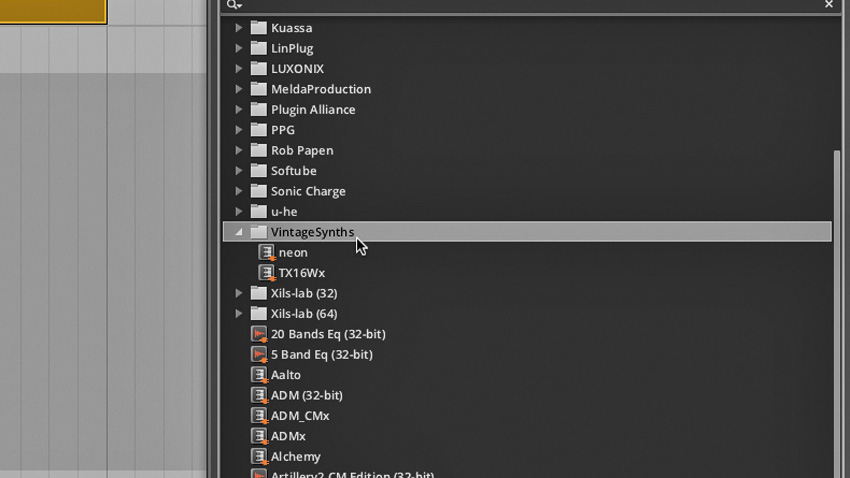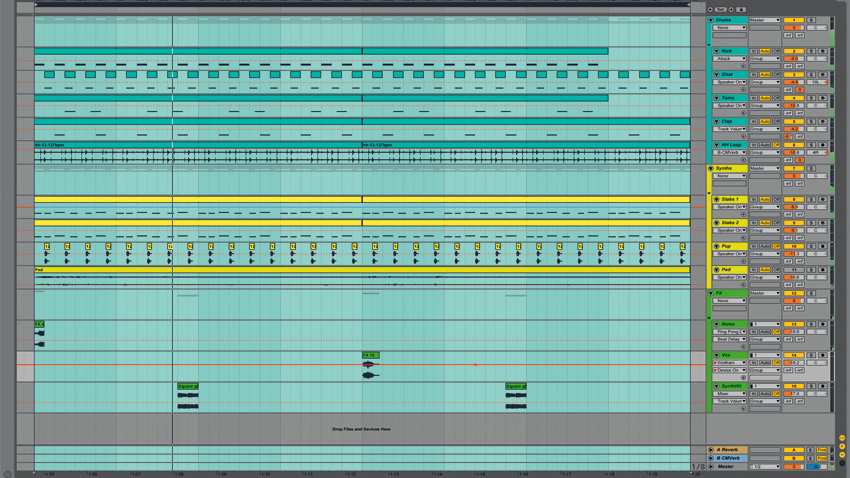10 ways to speed up and improve your production workflow
Work smarter, faster and more effectively with our tips

Try and comprehend the full music-making power, convenience and potential of the modern computer. Mind-bending, isn't it? But with more options comes more choice, and an abundance of choice can be overwhelming.
Too many variables and decisions to make can sap your creativity, disrupt your studio flow and kill off your productivity. So, to prevent you getting bogged down in technicalities, battling DAW options, or generally doing things the hard way, we've put together ten key tips to help you release and realise your musical ideas quicker than ever.
For more workflow- and inspiration-related tips and advice, pick up Computer Music 222, which is on sale now.
1. Mix as you go
It can be productive to quickly throw your track elements together roughly at the composition stage, then address the mix later, once your ideas are down. This does mean that the incomplete mix may lack the professional sheen of your favourite releases, which may cause you to lose heart. In that case, try the opposite approach and mix as you go, adding basic processing to each sound as you slot it into the track. Having pre-prepared plugin racks or channel strips are invaluable. Try both approaches and discover which works best for you.
2. RTFM!
Getting stuck on a DAW feature or synth parameter is a workflow killer, so make it a priority to read the manuals. Also, follow software-specific tutorials/guides such as Computer Music's How To Use… series. Time is limited for all of us, so keep learning time to a minimum and restrict yourself to only a handful of tools that you can learn inside out. Make your own notes if necessary - compile a list of useful features, menu functions, etc. You can even print your 'crib sheets' out and keep them to hand if needed.

3. Preparation is key
As the old saying goes, fail to prepare and you prepare to fail. So take heed and do as much of your plugin and DAW setup ahead of time as you can. Have a variety of template sessions and racks ready, including elements such as multi-output instruments, channel strips, creative plugin chains, mastering chains, and outboard gear.

4. Custom plugin list
If your DAW's list of plugins is long and chaotic, speed up your productivity by categorising them into relevant folders - perhaps by processor type or 'most used'. To take this concept further, prepare custom racks or devices for things that you do all the time - from basic workhorse gadgets like a 'bass roll-off' tool, to inspiring banks of sweeps/FX. You can even have your own pre-prepared 'track finisher' sample pack full of sweeps, crashes, noise textures, or useful 'instant FX' return effects loaded up for quick results.
Want all the hottest music and gear news, reviews, deals, features and more, direct to your inbox? Sign up here.
5. Disable distraction
We're all passionate about making music, but external influences inevitably get in the way to some extent. Be fully prepared for this. When you're ready for a studio session, minimise potential distractions. Log out of your social media accounts or disconnect yourself from the internet, put your phone on silent and out of reach, have food prepared, tell your partner or friends to leave you alone for a few hours… then focus your full attention on the DAW.
6. Keyboard shortcuts
Sending your mouse pointer up to the menu bar every time you need a particular DAW command may seem quick, but these frequent movements all add up. While keyboard shortcuts aren't sexy, they will accelerate your workflow immensely and help you to finish tracks quicker, so try and memorise your most used ones. Functions like quantising MIDI, slicing audio at the playhead point, looping sections and muting regions are just a small handful of commands you should know. Every time you reach into a menu for something, see if there's a shortcut command for it, and use that instead next time.
Furthermore, many DAWs allow you to create your own keyboard shortcuts, and some even let you make your own chains of key commands ('macros') and define custom processes to do things like muting all clips that are less than a bar in length, for example.
7. Sitting comfortably?
Is your studio chair comfortable? Can you wear your headphones for hours at a time without them making your head hurt? Is everything within easy reach? Are your speakers positioned for the best sound? It's easy to focus on what's going on inside the computer to help speed up workflow, but if your studio setup isn't ergonomic, comfortable and set up for optimum playback, your work rate will suffer, and you may even develop long-term physical problems.

8. Time to tidy
Is your project getting out of hand? Too many tracks? Loads of ideas and alternative arrangements knocking around on the timeline? Bypassed plugins sitting around "just in case" you decide to revert to that old EQ setting? All of this can hold you back, making the project slow and confusing to navigate, and eating system resources.
Work out a strategy to deal with it: save the project, then delete unused tracks, render parts that you're happy with as audio, and go through all those unused ideas and delete any you can't see yourself using in this project. Now Save As to store this tidier project - most DAWs have some kind of 'Collect All and Save' function, which will save the whole project, samples and all. Don't retain any large, unwanted takes of audio from the bloated project, though.

9. Compare and contrast
Ever got a track 'finished', only to find that it doesn't stack up next to your favourite commercial mixes? Start comparing it early on rather than right at the end, then continue to do so with every vital change.
Also, hitting Save each time will overwrite your previous stages; instead, when you've made a few significant tweaks, Save As, and create numbered versions. Render a mix out whenever you do this so you can easily compare to your current version - sometimes, you might decide to revert to an
earlier, better mix.
10. Quality samples
Having a large, diverse sample collection is all very well, but rummaging through thousands of samples on your hard drive can be a massive buzzkill when you're trying to focus on music-making. Instead, make a highly organised samples folder that's all about quality, not quantity - reduce the bloat and keep only the best samples that are unique to you and your signature sound. The same goes for old, abandoned projects, too. Harvest these for parts, then archive them in an organised fashion or just delete them for good.
In terms of how you should organise your chosen samples, that's up to you! Some prefer breaking it down by instrument ('hats', 'kicks', etc), while others prefer to go by genre or sample collection. When you do choose a structure, make sure you stick to it.
Get 20 track-starting ideas, 10 workflow-accelerating techniques, 10 easy music theory tips, 40+ videos, and tons more with Computer Music's Instant Inspiration issue (221, October 2015)
Computer Music magazine is the world’s best selling publication dedicated solely to making great music with your Mac or PC computer. Each issue it brings its lucky readers the best in cutting-edge tutorials, need-to-know, expert software reviews and even all the tools you actually need to make great music today, courtesy of our legendary CM Plugin Suite.
